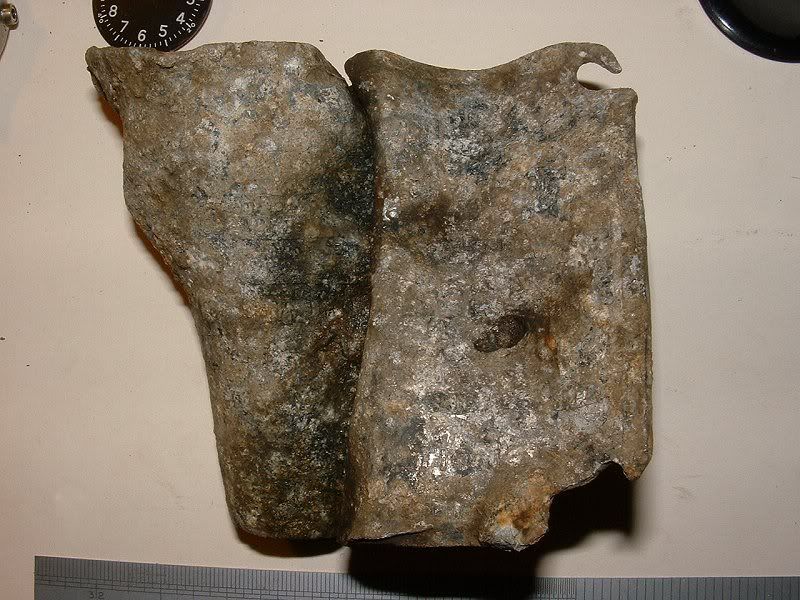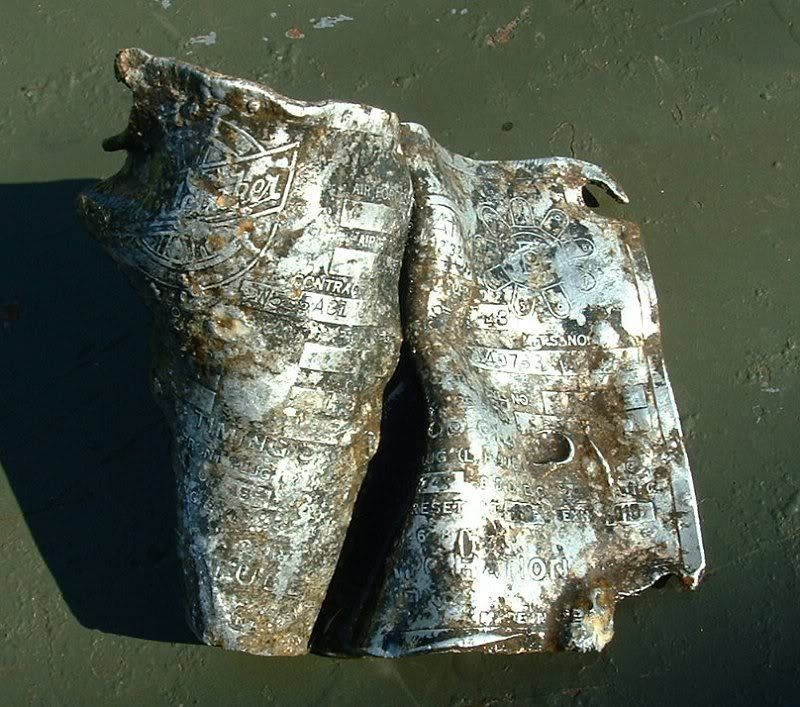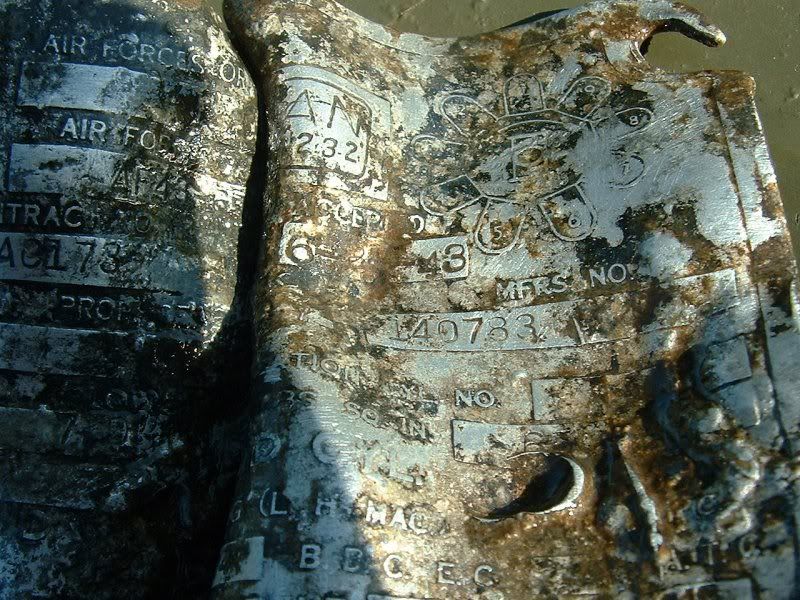B-17G-1-VE 42-39825 "Zenobia el Elephanta" engine data plate.
On the morning of Sunday, 5 December 1943 42-39825 crashed on take-off into the village of Deenethorpe, coming to rest against an unoccupied cottage.
It was believed a combination of prop wash and icing resulted in loss of power and caused the port wing to sink until it touched the runway, turning the aircraft to port and down the hill into the village.
Eight of the crew managed to scramble clear and dashed around the village to warn the inhabitants to run for their lives before the burning plane exploded.
The navigator and bombardier were in the nose of the aircraft and were badly injured. They were bravely rescued by ground personnel and recovered eventually from their injuries.
Twenty minutes after the crash, the aircraft, loaded with 6000 pounds of bombs and over 2000 gallons of aviation fuel, exploded with a tremendous roar, taking the airfield's only fire tender up with it.
The ground crew who braved the burning aircraft to rescue the injured men were M/Sgt Earl K. Williams and M/Sgt Francis F. Snider, who dragged clear Lt Carl T. Floto (the navigator), and Capt Ralph J. White and Cpl William N. Luna who rescued Lt John J. King (the bombardier).
Before:

After:

Detail before:

After:

Although most of the serial numbers are hidden in the folded part, the acceptance date of 6-23-43 came up well, as did the contract number W535AC17319 and the manufacturer's number 140783.
Partially visible is the order number AF43-65......
All the best,
Paul





